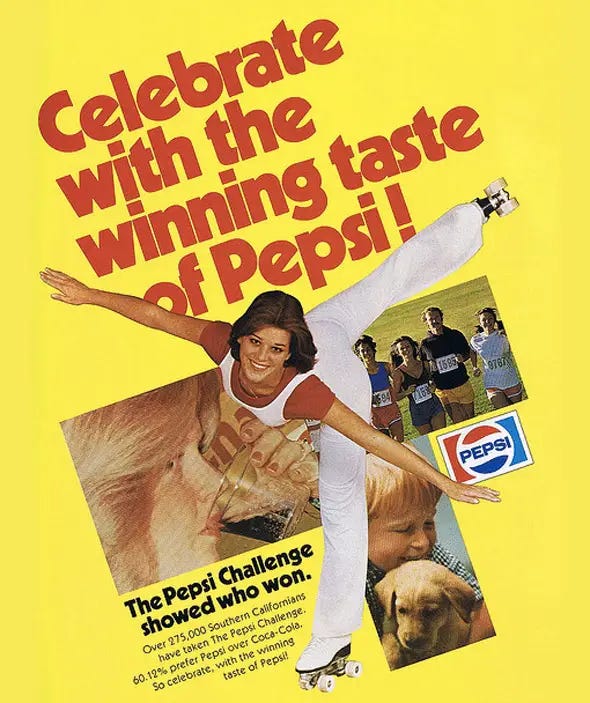
10 Aug Repositioning The Competition: What To Do & What Not To Do
I was reading this book called “Positioning: The Battle For Your Mind” by Al Ries and Jack Trout. Oftentimes, this book is referred to as the “Bible” for advertisers and marketers throughout the world. The aforementioned book was my inspiration for this article on Repositioning the competition, and long-story-short, you should read it.
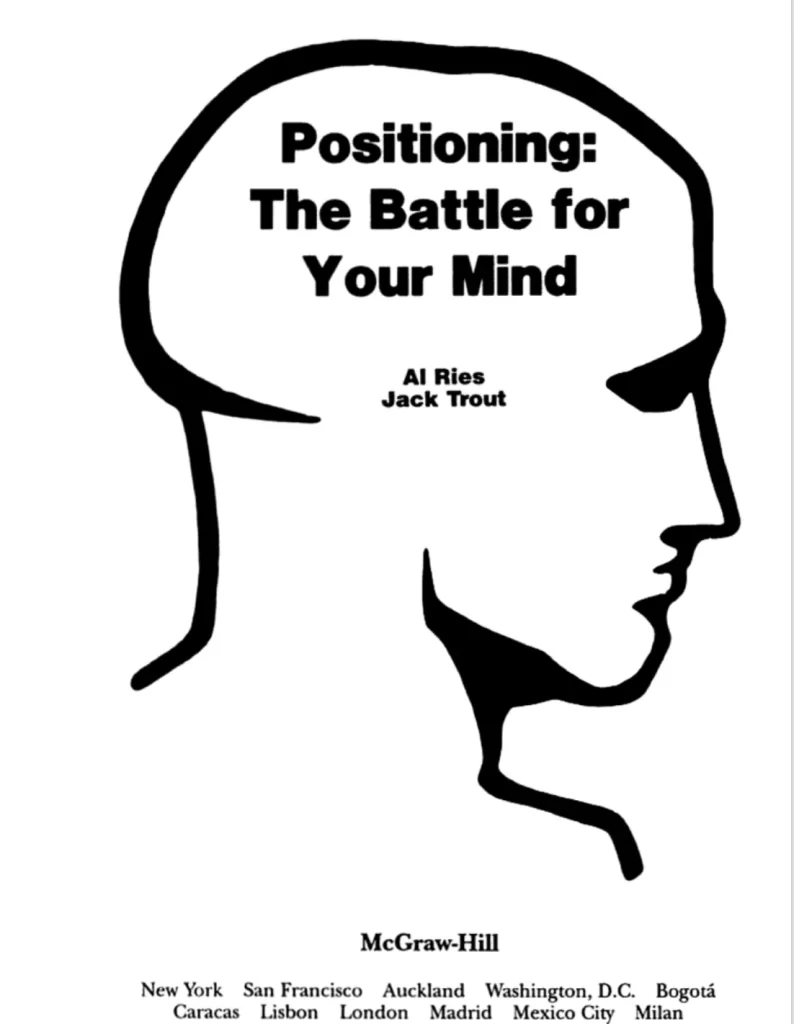
Cherchez Le Creneaux
Before I talk about repositioning or comparative advertising, it is important to talk about this French saying “Cherchez Le Creneaux”. I’m living in Montreal, Quebec right now, and I have to associate myself with some quasi-French.
Cherchez Le Creneaux is a French saying that translates to “Look for the hole”. Finding a hole or a niche is one of the best marketing strategies out there. You find a hole in the prospect’s mind, and try to fill it.
Tesla might not have been the first electric car company, but it was the first electric car company to fill that hole in people’s minds. Toms shoes filled the hole of being a company that donates a pair of shoes every time you buy one.
Volkswagen Beetle was the world’s first small car (not the first, but the first in people’s minds).
The creneau for Volkswagen was the size of the car. It was small. The best way to embrace it was to clearly position it as a small car. The ad was so successful because it stated Beetle’s position clearly and unequivocally (Al Ries and Jack Trout).
If you want to build a company, then choose any product/service.
If you want to build a brand, then choose a creneau (niche/hole), and occupy that space in your prospect’s mind.
Such a strategy is also called “Blue Ocean Strategy”, and marketing grads often read about it during their university years.
Baseless Comparative Advertising: Don’t Do It
Sometimes, we can’t find a creneau. Not because we don’t want to, but because the market (and people’s heads) is too concentrated, and there isn’t a space to be filled. There is no niche to go after.
When you go to a supermarket, there are more than 10,000 products or brands that you see on display. An average college graduate has a vocabulary of 8,000 words. Do you see the problem?
When marketers find themselves competing in a highly crowded market, we often try to do the less smart thing of comparing ourselves with our competitors.
We want to position the brand/product as being better than the competitor, and we forget that this is exactly what the customer is beware of.
Think about it.
As a consumer, if you see an ad by Adidas saying that they’re better than Nike; then would you believe it, or would you think “Of course, Adidas would say that they’re better than Nike”? The latter, right?
When brands make a statement like that, consumers proceed with caution. They almost expect this to happen, and since they’re already expecting it, and since there’s absolutely nothing new about it, do you think it is gonna work? Probably not!
We’re better than our competitors isn’t a repositioning campaign, it is a “baseless” comparative campaign and it isn’t very effective.
There is a psychological flaw in the advertiser’s reasoning which the prospect is quick to detect, “If you’re so smart, how come you’re not rich?”.
This is why you won’t see the category leaders engage in advertising like this. Smaller brands/competitors tend to do this. This shows desperation. Desperation doesn’t equal sales.
Maybe examples would help here.
A few years ago, Pepsi ran the “Pepsi Challenge”, and it claimed that more than half the Coke drinkers prefer Pepsi.

The campaign was so unsuccessful that in New York, the US’ biggest soft-drink market, Coca-Cola even gained a few points after the Pepsi challenge ads started running.
What’s wrong with such comparative advertising?
- These ads use the competitor as the benchmark for their own advertising, and in the process of doing that, they fail to reposition their competitors. Repositioning is key, and I will talk more about it in the next section.
- These ads don’t answer the question of “Why”. The customers need answers to all these questions before changing their perception:
- What things are you better at?
- What makes you better?
- Do I care about the reasons because of which it makes you better?
Given below is examples of an ad that wasn’t effective (at all) because of the flaws mentioned above:
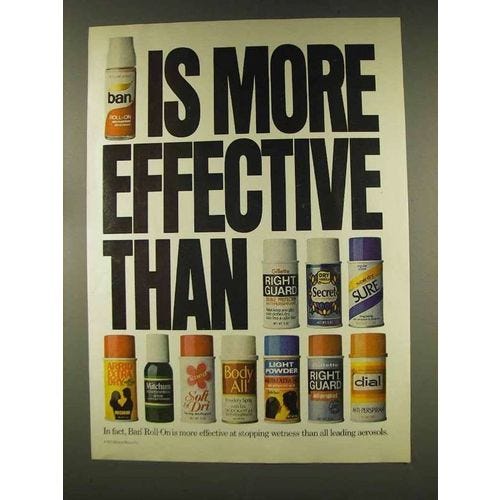
Why are you better than all these other products? What makes you better? Do I care about that reason?
NOTE: The reason is actually given at the bottom, but it occupies less than 5% of the space of this print ad. Not the best strategy, when your most important message is not prominent; agreed?
This happens on digital channels as well.
Almost all brands bid on competitor keywords. When they do so, they have 2-3 thirty word headlines, and up to 2 ninety word descriptions to show/prove to its customers why they are better than the brand that the customer is searching for.
Rather than doing that, brands simply state something like “We’re Better Than Them – Try us free for 90 days” or “The XYZ alternative – Best Company Ever”.
Marketers who do this aren’t aware of how difficult it is to change a consumer’s mind. Advertising is tough, and it needs an element of creativity to succeed. It needs a “WHY” that the consumer cares about. Without the “WHY”, there’s no comparison.
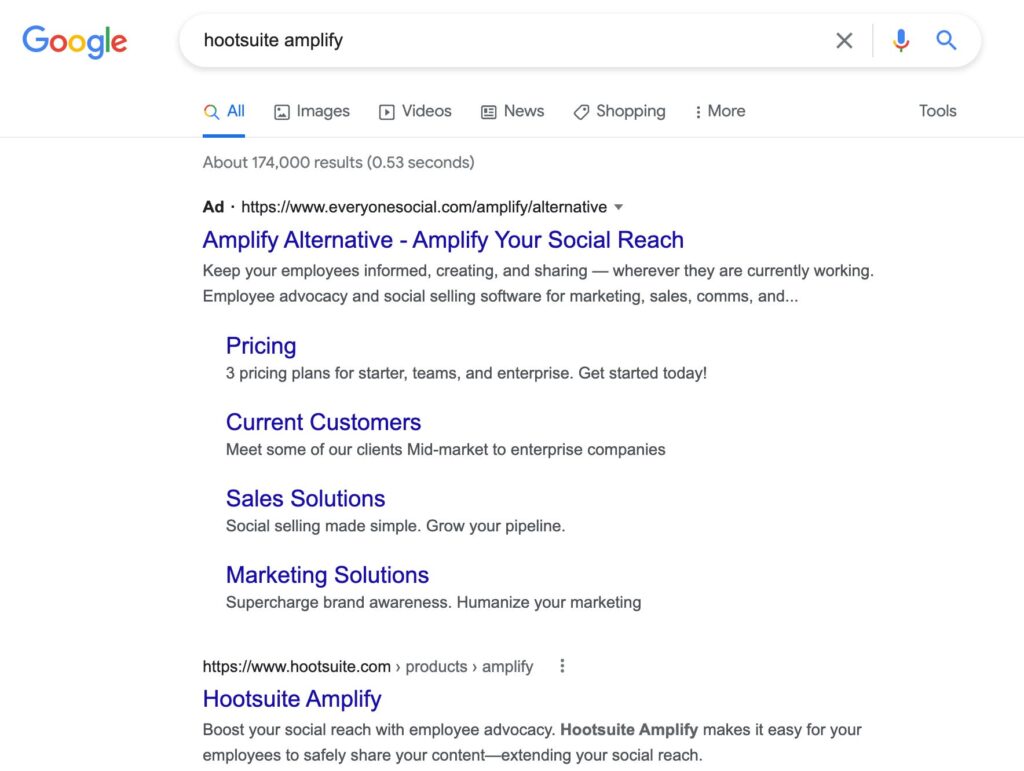
In my mind, the Amplify word is owned by Hootsuite, and the ad for “Everyone Social” didn’t do enough to convince me otherwise.
Something simple like “Tailor Made For You – Small Businesses Love Us” or “8 More Features – Low Cost Amplify Alternative” might have done a better job to attract my attention.
These headlines clearly tell me why I might want to consider “Everyone Social” – it is meant for small businesses like mine, it has 8 more features than Hootsuite Amplify, and it is cheaper. If the prospect hasn’t already made up his/her mind, then such an ad might help.
Don’t believe me? Do an Ad Variation Experiment on Google Ads and test my hypothesis.
A few more examples? Here you go:
Rand Fishkin is a household name in SEO, especially because he co-founded Moz. When someone is searching for his name, and an ad like the one by “Position1seo” is triggered, what do you think the prospect might think?
Would they consider clicking on an ad like this? Even if they click on such an overly aggressive ad, do you think they will purchase their services? In my eyes, it is highly unlikely.
Here’s how folks at Ayima.com put it:
They instantly come off as overly aggressive, and certainly not the sort of people you would want to work with.
If RC Cola really tasted as good as Coke or Pepsi, wouldn’t that reflect in their sales and popularity? That’s one of the questions that came to people’s minds when they saw this ad.
Advertisers running ads like these often forget that taste is often based on perceptions, and running ads like these isn’t going to affect that. For some people, broccoli tastes good because they think it is healthy, whereas for me, broccoli looks ugly and that’s why I can’t eat it. I also don’t like its texture.
See? Taste is not only subjective, it is perceptive too. That’s the reason why I love chicken but can never get to try an octopus. Yuck! Even the thought of having an octopus is scary. THE THOUGHT!
Anyway, in my opinion, all these ads are examples of baseless comparisons. Then what should our comparative ads look like, and what should they try to achieve?
Repositioning The Competition – A Better Way Of Comparative Advertising
To understand repositioning, we first need to understand what positioning is.
Positioning, in the easiest words, is the space that a brand or product occupies in someone’s mind. Brands spend billions of dollars trying to occupy a single word in people’s minds. Volvo owns the word “safety”, BMW owns “driver’s car”, Sensodyne owns “Sensitivity”, Tesla owns “Electric car”, Speedo owns “Swimming gear” and Jameson owns “Irish Whiskey”.
Advertising is a form of communication, and in a society that is full of over-communicated messages, the truth is irrelevant. Have you heard the age-old adage “Perception is reality”?
Positioning is all about perceptions, and a brand that can shape (or re-shape) perceptions wins the marketing battle. Truth such as “RC Cola tastes better than Coke and Pepsi” is baseless because it doesn’t shift perceptions. If no one can buy your truth then no one can buy your product.
So what direction to take when you can’t find a creneau? You make your own creneau by repositioning your competition.
Repositioning the competition, according to Jack Trout, implies:
To move a new idea or product into the mind, you must first move an old one out.
He also gave a brilliant example in an article that was published on Forbes that struck me. Here’s an excerpt from that article:
“The world is round,” said Christopher Columbus. “No, it’s not,” said the public, “it’s flat.”
To convince the public otherwise, 15th century scientists first had to prove the world wasn’t flat. One of their more convincing arguments was the fact that sailors at sea were first able to observe the tops of the masts of an approaching ship, then the sails, then the hull. If the world were flat, they would see the whole ship at once.
All the mathematical arguments in the world weren’t as effective as a simple observation the public should verify themselves. Once an old idea is overturned, selling the new idea is often ludicrously simple. As a matter of fact, people will often actively search for a new idea to fill the void.
Now let’s see what repositioning looks like in the world of advertising.
Repositioning The Competition – Aspirin
Bayer is a pharmaceutical company that makes Aspirin, and Johnson & Johnson (yes the vaccine maker) is a company that makes Tylenol.
Aspirin used to be the market leader in the analgesic category until Johnson and Johnson used the repositioning strategy to sideline Aspirin and introduce Tylenol.
Bettercopy explains this concept in a very elegant way:
“For the millions who should not take aspirin” is a very interesting line. Many people today are still unaware of the differences between over the counter analgesics, before this ad even fewer were. It’s interesting because it’s alarming enough to draw in the uninformed.
Notice, too, that the ad doesn’t say Tylenol is better than aspirin. It doesn’t even directly say that Tylenol is better for the stomach. Right now, it’s only saying some people shouldn’t use aspirin.It’s avoiding those comparative statements because comparative statements can conflict with consumers pre-held notions, and if they do they are likely to get dismissed.
Instead, the ad tries to convey new information – the instances in which taking aspirin is detrimental and, as it builds that case, it lets the consumers decide for themselves that Tylenol is better. That’s the essence of repositioning.
Repositioning is a bit different than strictly comparing your product with your competitors. Comparative advertising compares the 2 products side by side.
Repositioning, however, targets a competitor’s USP (unique selling point), portrays it as a weakness, and then shows how their own product can fill that weakness.
Also, remember, the weakness you point out must be something that people care about, and something that they can easily verify themselves.
Repositioning has much to do with how the competitive brand is interpreted by the consumer. It delicately urges the consumer to evaluate or question their current understanding of it. While ads may allude to some form of comparison, they aren’t blatantly obvious. (Sheldon De Souza, 2019)
It makes people question their own perceptions, and while doing so, it nudges people into forming a new perception. Isn’t that powerful?
More examples? Let’s do it.
Repositioning The Competition – Ragu
Another example that I absolutely love is the Ragu Vs. Prego spaghetti sauce.
Ragu, since the dawn of time, has been the most successful company in the spaghetti market space. It occupied the position of being the “best spaghetti sauce” in everyone’s mind.
Prego challenged that position. How?
They compared Ragu and Prego in their TV commercials and positioned themselves as the “thick” spaghetti sauce. Labeling themselves as thick spaghetti sauce and calling Ragu’s sauce “thin”, made people question their own perceptions about Ragu spaghetti sauce.
Is Ragu the best spaghetti sauce, or is it the best “thin” spaghetti sauce? Maybe we should try the “thick” spaghetti sauce. Okay, let’s try Prego.
This was one of the great repositioning campaigns because it not only repositioned Ragu but in the process of doing so, it also helped Prego carve a new creneau in the spaghetti sauce market.
Did the ads mention that Prego is better than Ragu, or if thick spaghetti sauce is better than the thin one? No!
The ads merely posed the question:
Do you want thin sauce? Get Ragu.
Do you want thick sauce? Reach out for Prego.
Repositioning The Competition – Microsoft PC
If you Google “comparative advertising”, you’ll find tons of articles that mention the Apple Mac Vs. PC ads that Apple used to run.
One of the key elements of these ads was the repositioning element. “Repositioning The Competition” is a form of comparative advertising, but this subtype of comparative ads is so strong that it can help shape human perceptions.
If you watch this YouTube video, you’ll start to see and understand how repositioning works.
Apple, in their Mac Vs. PC commercials, was trying to reposition PC as dull, dry, and boring while capitalizing on its young, cool, and dynamic laptop.
Imagine if Apple just created a website/banner that compared the features of a Mac and a PC. Would it have worked in the same way?
Conclusion
Repositioning, when done correctly, can be the single most important strategy for any company to implement if they want to move up the competitive ladder and displace their competition.
Burger King’s hugely successful “broiling, not frying campaign” against McDonald’s and BMW’s campaign in which it referred to Mercedes Benz’s ultra-luxury cars as “The Ultimate Sitting Machine” Vs. BMW’s “Ultimate Driving Machine” are all examples of repositioning campaigns.
Can I tell you if engaging in such comparative advertising and feeding on your competitors’ flaws is ethical?
Not really! That’s for you to decide.
But if you want to try comparative advertising via repositioning the competition, and your HiPPO (highest paid person’s opinion) boss is reluctant to try that because he believes it isn’t a part of the corporations’ culture, then maybe try quoting this line by Jack and Ries:
We work in an industry wherein you play the game by the rules that society sets, and not your own.
If the society likes repositioning campaigns, then it is the marketers’ job to capitalize on it.
Nonetheless, at least these “repositioning the competitor” campaigns are so much better than some of the “baseless” comparative ads that I showed you in this article.
To conclude, remember this from the book:
Napoleon broke the rules of civilized warfare and history hailed him as a military genius.
Implement repositioning in an ethical, legal, and fair manner, and you have a chance to go down as a “genius” in the history of your company too.





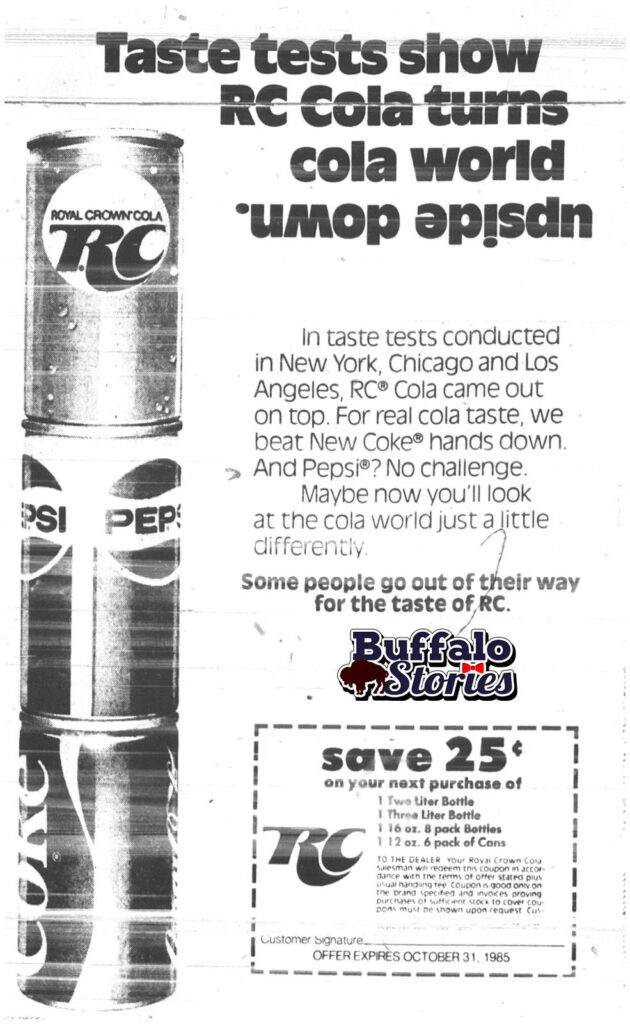

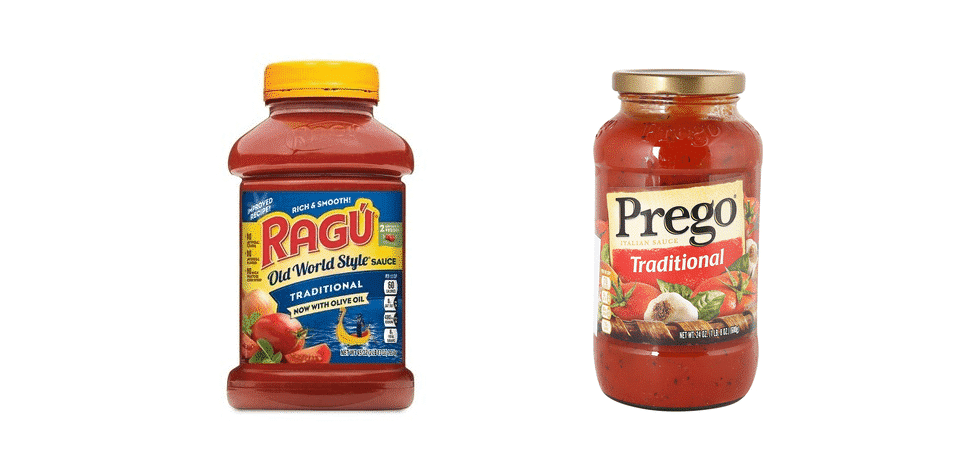
Sorry, the comment form is closed at this time.